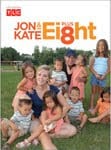Personally, we think that the real question is, “Can you remain sane with eight kids?” However, we apparently can’t stop watching TLC, and thus we’re aware of the plethora of television shows out there right now that are helping us to vicariously experience the “thrills” of a large family. However, for us, the question remains to a certain degree: Is continuing to have child after child a good idea for a sustainable lifestyle?
There are three disclaimers here. The first is that we certainly, above and beyond anything else, think that how many children a person or family has (or the choice to not have any at all) is absolutely a personal choice. The discussion here is mostly going to be about how the media is positioning the idea of large families and the information (or lack thereof) that’s being presented in these shows. The second disclaimer is that we’re aware of these shows because we have an addiction to the show “Cake Boss.” There. We feel better. Admitting the problem is half the problem. The third disclaimer is that we know the importance of global population stabilization to sustainability.
America seems fascinated with these large families. From tabloid sensation Nadya Suleman to the small nation known as the Duggars to the infamous “Kate Plus Eight.” And television, specifically TLC, seems happy to satisfy America’s fascination. However, as is often the problem with television, the challenges of a family that large aren’t often pointed out.
Well, that’s not true, is it? The personal challenges, such as stress between parental units, is often pointed out. That’s because what we tune in for is the human drama. Kate was more famous after she and Jon got a divorce than before, after all. However, these television shows often don’t show the reality of material and financial strains for a family that large.
The Home: With eight (or more) children, the need for a bigger house is always there. Because these families are on television, getting television-sized paychecks, they can suddenly always afford a modern and huge house for their large families.
The Stuff: If you watch these shows closely (and we may admit to having watched a few episodes), you’ll notice that the children never use second-hand ware and never share toys. They all have their own individual versions of the same toys. Now, we understand that children will argue over sharing toys, but to a certain degree these parents need to be thinking of the world these children will grow into. And eight different plastic toys is, well, a lot of plastic.
The Trips: We like to vacation, too. However, these shows have the families involved in elaborate vacations all of the time. Almost no real family could afford that.
So what’s the point here? These shows are treating children a bit like “stuff” in that they’re presenting a picture that more is always better no matter what. That’s not true. More kids means more stuff, and it means needing the money to afford more stuff. A new one of these shows seems to pop up just about weekly. Are these shows enforcing family values (by which we mean when the parents aren’t getting arrested or divorced) or just contributing to unrealistic expectations among viewers? You tell us. Friend us on Facebook and let us know what you think about these shows and the messages that they send.
The Get Satisfied Interactive Handbook evaluates where you are on your journey to finding the satisfaction of enough and gives you a personalized how-to plan on beginning to find the satisfaction of enough




